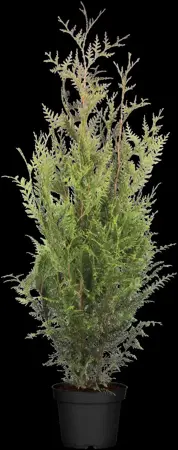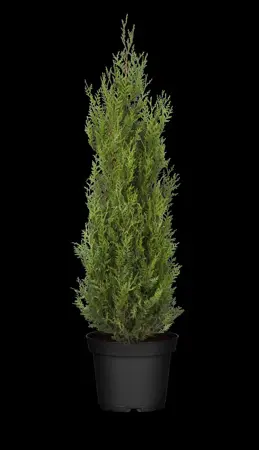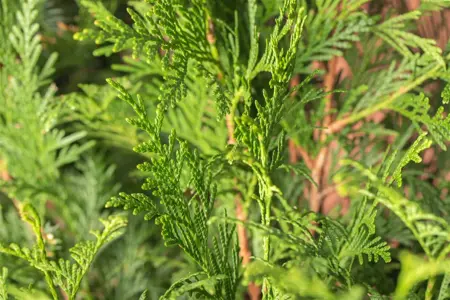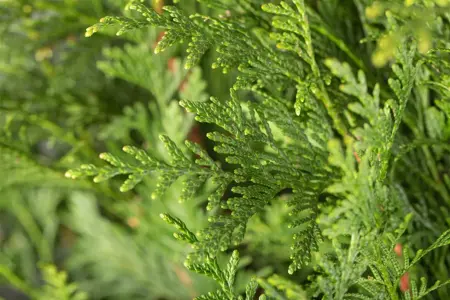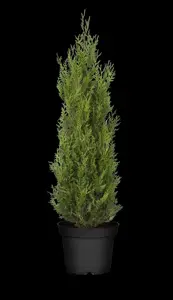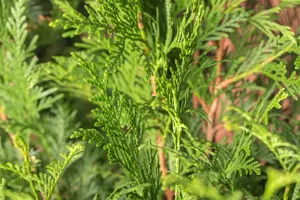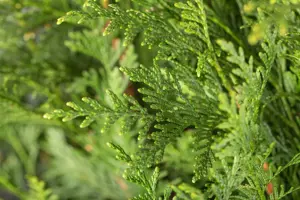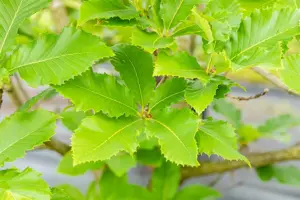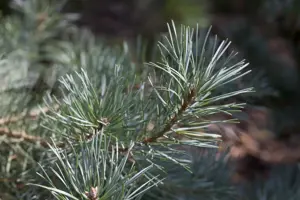Thuja plicata 'Atrovirens' - P9
Thuja plicata 'Atrovirens' - P9
Description
The Western red cedar 'Atrovirens' (Thuja plicata) is a small tree that grows in a cone shape and usually reaches a height of around 15 metres and a width of around 3 metres. Its scaly, glossy leaves are dark green in colour. Decorative brown cones adorn Thuja plicata 'Atrovirens' from August. This shrub is well tolerant of frost and prefers well-drained, nutrient-rich, acidic, slightly acidic soil in a sunny to semi-shady position.
Synonym
Synonyms (botanical): Thuja gigantea.
Bulletpoints
* Tolerant to pruning
* Resistant to urban climates, wind-resistant, shade-tolerant, flood-tolerant, cannot be built over
leaves
The Western red cedar 'Atrovirens' is evergreen. Its needles are dark green, opposite, glossy, scale-like.
Bark
Red-brown, striped, torn bark makes this plant an eye-catcher in any garden.
Spread
North America.
Frost hardiness
The Western red cedar 'Atrovirens' has good frost hardiness.
Growth
Cone-shaped.
Water
The plant has a medium water requirement.
Pruning
Pruning, ideally from August to mid-September, is advisable for this plant.
Location
Preferred location in a sunny to semi-shady position.
Soil
Thuja plicata 'Atrovirens' thrives on all acidic, humus-rich and sufficiently moist soils.
Planting time
Container plants can be planted all year round, except when the soil is frozen and in summer heat (over 30°C).
Tasks
- Hedge pruning: In the period from August to mid-September every 5 weeks.
Fruit
The oval, brown cones of Thuja plicata 'Atrovirens' appear from August. The young cones have a green-brown colour.
Worth knowing
Plant or parts of the plant are poisonous.
Use
Solitary, group planting, topiary
Root
Thuja plicata 'Atrovirens' is a shallow-rooted plant and, depending on the soil, forms densely branched, finely branched roots.
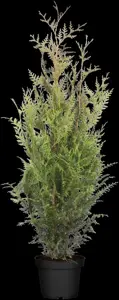
- Article number750
-
EAN codeTHPATROV-0P9
- Latin nameThuja plicata 'Atrovirens'
- catalogLandscape shop

